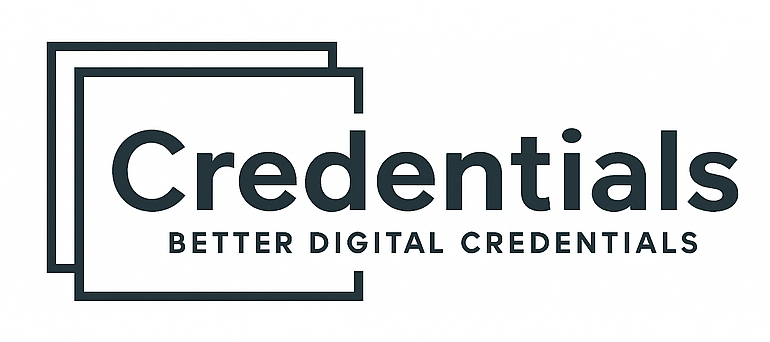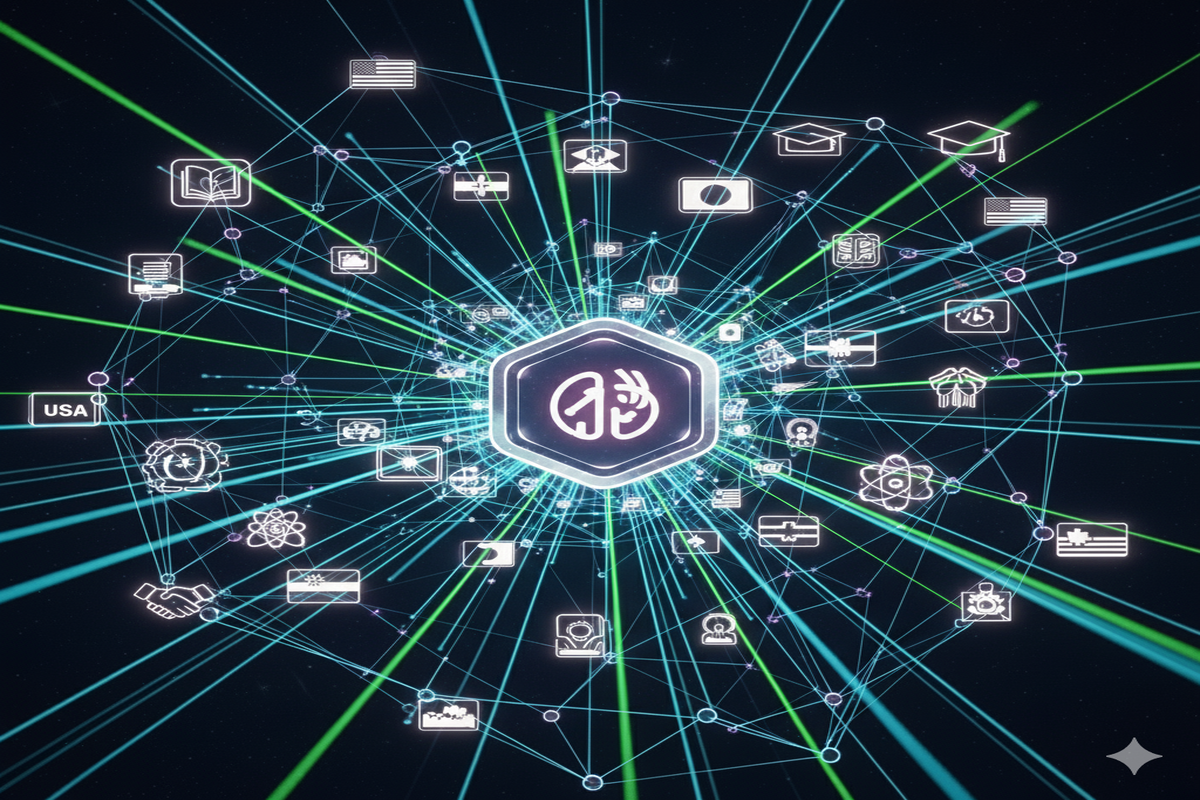Introduction: A Turning Point in Skills Recognition
The way society recognizes learning and professional achievements is undergoing a profound transformation. For decades, traditional degrees, diplomas, and paper-based certificates were the dominant proof of skills and knowledge. However, the rapid pace of technological change, globalization of labor markets, and the increasing demand for continuous learning are revealing the limitations of these traditional methods.
Employers, universities, and governments are asking a critical question: How can we ensure that skills are transparent, verifiable, and portable in a digital-first world? The answer lies in digital credentials—an innovation that goes beyond replacing paper certificates, offering a completely new infrastructure for trust, recognition, and mobility.
What Exactly Are Digital Credentials?
Digital credentials are electronic records that represent an individual’s skills, competencies, or achievements in a secure and verifiable format. Unlike static PDFs or paper documents, they are dynamic and metadata-rich, often following open technical standards.
Some of the key characteristics include:
- Structured metadata: Each credential includes details about the issuing institution, the learner, the date of issuance, the skill or knowledge acquired, and evidence supporting the achievement (such as projects or assessments).
- Verifiability: They can be validated online in seconds, reducing the risk of fraud and eliminating the need for time-consuming manual verification processes.
- Shareability: Holders can showcase their credentials across digital platforms such as LinkedIn, e-portfolios, institutional apps, or job application systems.
- Interoperability: By complying with standards like Open Badges 3.0, 1EdTech, or European Learning Model (ELM), they can be recognized across countries, institutions, and systems.
This makes digital credentials not just a digital copy of a certificate, but a living proof of skills that can evolve alongside the learner’s career.
From Degrees to Skills: Why Digital Credentials Matter
For most of the 20th century, education was dominated by long-form degrees. A diploma or bachelor’s certificate was seen as the ultimate gateway to employment. While degrees still hold value, today’s economy operates differently:
- Jobs are evolving faster than traditional degrees: By the time a four-year program is completed, some skills may already be outdated.
- The rise of micro-skills: Employers increasingly value specialized competencies—such as coding languages, digital marketing tools, or sustainability practices—that can be demonstrated through short courses or training.
- Global competition: Workers now compete internationally, which requires credentials that can be trusted and validated across borders.
Digital credentials provide a solution by breaking down learning into modular, verifiable components that can be stacked into a lifelong portfolio. A professional might combine a master’s degree, multiple microcredentials, and employer-issued certificates—all seamlessly shareable and verifiable online.
Platforms Leading the Way
As adoption grows, several platforms have emerged to support institutions and organizations in issuing digital credentials. Well-established providers such as Credly and Accredible have built recognition in the market by offering web-based solutions aligned with international standards.
At the same time, newer entrants are reshaping the landscape with more innovative approaches. POK Proof of Knowledge, for example, has pioneered the use of blockchain and NFTs for digital credentials, ensuring permanence, learner ownership, and free issuance at scale. This contrasts with traditional providers, where credentialing often comes at a cost per issuance and depends on centralized infrastructure.
While each platform contributes to the growth of the ecosystem, models like POK’s highlight how open standards, decentralization, and affordability can accelerate global adoption.
Key Benefits for Stakeholders
For Learners and Professionals
- Portability: Credentials can be carried digitally across platforms and countries.
- Employability: They make hidden skills visible, helping individuals stand out in competitive job markets.
- Ownership: Learners have control over their own records, avoiding dependency on a single institution or employer.
For Employers
- Faster hiring: Instead of manually checking references or paper diplomas, recruiters can instantly verify the authenticity of skills.
- Targeted talent development: Companies can issue microcredentials for training, compliance, or reskilling initiatives, aligning directly with business needs.
- Transparency: Employers gain a clearer picture of employee capabilities beyond traditional resumes.
For Educational Institutions
- Innovation in teaching: Universities can issue microcredentials for individual modules, online courses, or research projects.
- Global visibility: Credentials can be shared worldwide, increasing the institution’s reputation and reach.
- Alignment with industry: Digital credentials allow universities to better connect students’ learning outcomes with employer expectations.
For Governments and Policy Makers
- Workforce development: Credentials help governments measure and support skills across the population.
- Mobility and recognition: They contribute to cross-border recognition of skills, aligning with initiatives like the European Skills Agenda.
- Social inclusion: By validating non-formal and lifelong learning, digital credentials make opportunities accessible to wider groups.
Global Trends Driving Adoption
- International Standards
Organizations like UNESCO, the OECD, and the European Commission are pushing for frameworks that allow credentials to be portable and recognized across borders. The adoption of ELM (European Learning Model) and Open Badges 3.0 is accelerating this trend. - The Microcredential Movement
Universities in Europe, North America, and Asia are increasingly adopting microcredentials—short, focused certifications that reflect specific skills. - Corporate Learning and Reskilling
Companies such as Google, IBM, and Amazon are offering digital certifications for workforce development, responding to the urgent need for reskilling. - Blockchain and NFTs
Some providers, like POK, are leveraging blockchain to guarantee immutability, transparency, and learner sovereignty—an approach that positions them differently from web-based providers.
Real-World Applications
- Education: A university in Spain issues digital badges for language proficiency, which students can add to their resumes and LinkedIn profiles.
- Government: In Singapore, SkillsFuture initiatives provide citizens with digital records of training and upskilling activities.
- Corporate Training: A multinational bank certifies compliance training through digital badges, ensuring employees across 50 countries meet regulatory requirements.
- Professional Associations: Healthcare boards use digital credentials to verify ongoing medical education, reducing administrative burdens.
These examples highlight how digital credentials are already becoming mainstream tools across sectors.
Challenges to Overcome
While the potential is clear, digital credentials still face barriers:
- Adoption Gap: Not all institutions or employers are ready to transition from paper certificates.
- Standardization: Without universal technical standards, interoperability remains a challenge.
- Data Privacy: Learners must retain ownership and control of their credentials.
- Awareness: Many students and professionals are still unfamiliar with the benefits of digital credentials.
Overcoming these hurdles will require collaboration between governments, universities, technology providers, and employers. Platforms that balance innovation (like POK) with market familiarity (like Credly or Accredible) may help bridge this gap.
The Future: A Universal Language of Skills
Imagine a world where every skill you acquire—whether through a university degree, an online course, a corporate training, or a volunteer program—is instantly recognized and verifiable across borders. This is the vision of digital credentials:
- A universal language of skills, accessible globally.
- A system that adapts to the speed of change, keeping education and work aligned.
- An infrastructure of trust, where credentials are transparent, tamper-proof, and learner-owned.
In this scenario, approaches that emphasize learner control, zero-cost issuance, and permanent verification—like POK’s blockchain-based model—may emerge as the most sustainable path forward.
Conclusion
Digital credentials are not just a replacement for paper diplomas—they are a new paradigm for recognizing human potential. By combining transparency, portability, and global interoperability, they empower learners, employers, and institutions alike.
As adoption grows, the market will likely continue to diversify: traditional providers such as Credly and Accredible will coexist with newer, more disruptive platforms like POK. However, those prioritizing trust, affordability, and open standards are positioned to lead the next phase of global adoption.
The rise of digital credentials is not a passing trend—it is the foundation of the future of education and work.

